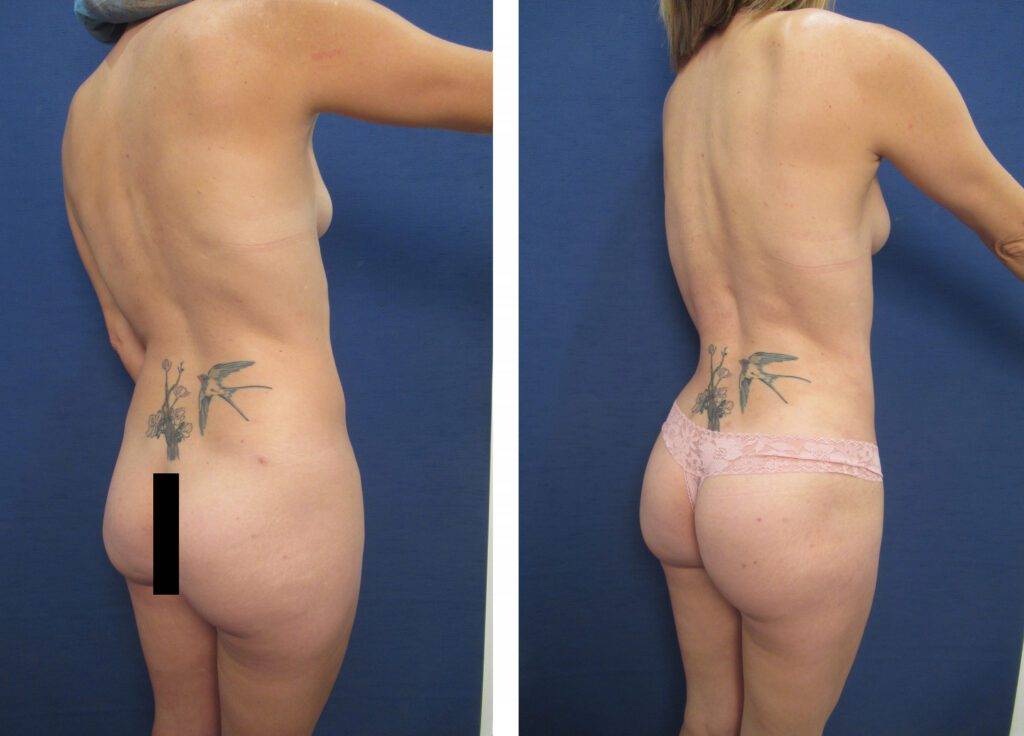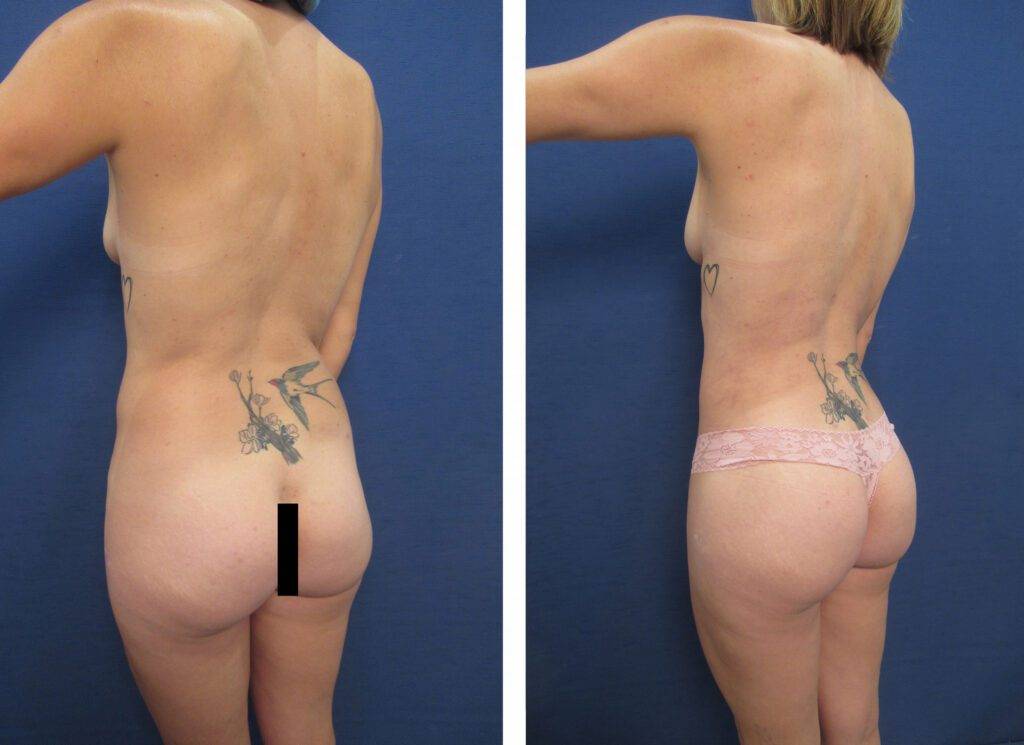

Please see this 36-year-old female who underwent high-definition liposuction with fat grafting from her abdomen to her butt.
Brazilian buttock lift revision before and after photographs are constructive when appreciating possible buttock shape and size improvements. Patients should evaluate these photos with a keen eye. The first thing to look at is whether the buttocks’ overall harmony is proportionate with the rest of the body. The next component is whether there is a soft transition between the legs and the buttocks and, more importantly, between the upper buttocks and the narrowed waistline. These transitions have been coined the “Tilde” curve and describe a gentle S-shaped curve.
Looking at Before and After Photos
What is the appearance of the buttock skin quality following the initial Brazilian Butt Lift surgery? Does the butt look wrinkly, or is cellulite on the lower buttock and legs? Does the buttock look droopy or too long in relation to the height of the back? These suboptimal results should be absent. They will necessitate a lateral thigh and buttock tuck if they are present. BBL revision before and after photos should demonstrate smooth contour lines with buttock and leg skin that are smooth.
Do Brazilian buttock lift revisions significantly differ between waist and buttock widths in before and after photos? One of the main reasons we do BBL revisions is that the volume placed into the butt initially has disappeared.
Losing Buttock Volume
Patients on the internet often claim they only retain 60% of their volume 6 months after their surgery. Although this is an actual observation of many BBL results, it should not be so. The reason nearly half of the butt volume is gone at six months is multifactorial.
First, the plastic surgeon may not use ultrasound-assisted liposuction. Ultrasound-assisted liposuction protects the fat cells from injury during the harvest process, thus damage and subsequent death of transferred fat cells. When fat cells die, they can either be reabsorbed or, worse yet, form pockets of firmness, characterized as fat necrosis.
Traditional liposuction techniques require ripping out the fat cells, which results in nicks to the outer fat cell shell. If the fat cell has been injured following your initial surgery, your body will remove the cells in your buttocks resulting in loss of gained results.
In addition, other reasons for fat loss are related to technical errors, including unnecessary higher negative pressures used during the sucking process or unnecessary positive pressures used during the injection. If the fat cells are not correctly washed to remove pro-inflammatory products and red blood cells, this can also result in loss of fat cell viability.
A final cause of fat cell injury involves the pretense that thinner patients must gain weight for their Brazilian buttock lift surgery. Unfortunately, weight gain only makes the fat cells larger and not more. The negative consequence is that a larger fat cell has less likelihood of making it through the small holes in the tip of the cannula used to remove the fat than smaller fat cells. As such, it is critical to avoid gaining weight for your BBL, no matter how thin you are. In contrast, you may gain weight once the fat cells have been transferred to your buttock and survived the transplant process!
Using ultrasound-assisted liposuction, 40% more fat can be harvested than traditional techniques. This makes revision BBL unnecessary for patients worried about having enough fat to get the desired BBL results.
Schedule a Meeting for your BBL Revision
A consultation with our board-certified surgeons at SurgiSculpt will help you realize what BBL revision results can achieve for you. Even if you feel too thin to get a great result, a consultation at SurgiSculpt will allow for an assessment of how much fat will be available for your BBL revision procedure.
This means no gaining weight and no need to buy a buttock pillow. An initial consultation at SurgiSculpt is highly encouraged if you need a BBL revision.

